Written by Wild Bill on The Prepper Journal.
So, on a bright clear winter day a couple who considered themselves young and athletic, decided to go nordic (cross-country) skiing, just the two of them, a spur of the moment thing. After all, they were there on vacation to ski. They did take a trail map obtained from a local source and decided on a trail that was more advanced than intermediate. The trail was clearly marked with the “blue-square”, still not an expert trail. Their first mistake – ski trails (nordic) and ski runs (alpine) are rated in comparison to the other trails and runs within the specific ski area. There is no industry or national “standard” so if one has been venturing off the grid covered in white gold say in the White Mountains of New Hampshire, their trail ratings don’t equate equally to those of say, the Taos Ski Valley of Northern New Mexico, or Summit County, Colorado . They are a general guide, but not general enough to go out without understanding the local measuring stick.



Their second mistake – when they left at around lunch time they dressed fashionable for the 40 degree prevailing temperature, expecting to be back about 4 hours later.
Mistake number three: Since they had arrived at their western resort the night before, with clearing skies, they did not know that it had been snowing for two-days straight and there was now a fresh new 28″ layer of what we affectionately call “Sierra Cement” – the closer it is to the freezing point, the higher the moisture level in snow, the heavier the snow. (Dry powder needs temps below 20 degrees F.) Normally not a big deal for experienced skiers, in fact we pray for just such conditions, but, in an area where trail markers can be obscured by drifting, blowing snow, this is a concern. Generally, these markers are placed every quarter of a mile, generally. Factoring in mischief, failure due to prolonged exposure, and vague in brilliant sun-reflected light. Miss one and you better know what you are doing.
You can see where this is going…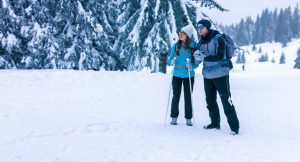
Mistake number four: They told no one of their plans.
Mistake number 5: They took sunscreen and a bottle of water each and their cell phones with multiple GPS apps, which failed as soon as they lost their signal.
Lost, they did survive the night because they found a small warming hut that protected them from the winds, and, with their combined body heat, the 42 degree drop in temperature overnight. They were found by the Sheriff’s Mountain Rescue Team working with the National Forest service. A lot of people taken away from their normal duties.
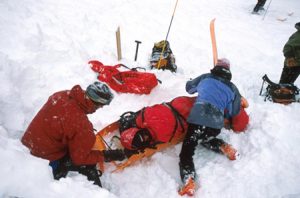
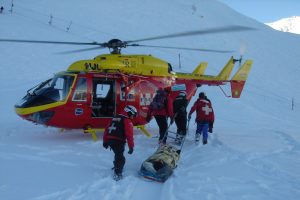
So as Preppers who may get caught off the grid in the deep of winter what should we focus on? Well, the things we know that apply no matter the weather!
First: PLANS. If it isn’t a SHTF scenario let someone know. If they were in a hotel, the hotel front desk staff. Since they were in a condo, the agency they rented it through – have you ever talked to a real person at Airbnb, Flipkey, or Hometogo? So what is your fall back? Yep, local police, fire station or Park Service rangers. These last three will teach you a very valuable lesson in responsibility if you fail to notify them of your return.

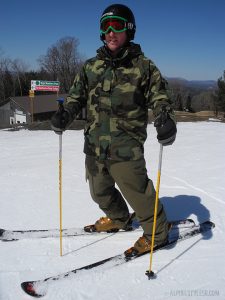
Second: CLOTHING. As a life-long skier I love that when you ski the “locals” favorite resorts in the West such as Alta or Brighton in the Cottonwood Canyons of the Wasatch Mountains of Utah, or A-Basin or Mary Jane, in the Rocky’s west of Denver, you see so many people dressed more in “army surplus” than you do in $3,000 Bogner ski wear they bought at Neiman Marcus. They live there, they know how to dress (and save money). If you have to be trendy get a fancy backpack and bring your uglies that keep you alive if vanity is THAT important to you. AND stuff your survival kit in there to show you have a shred of common sense. Understand fabrics.
Understand cotton – light, comfortable, flammable, useless as insulation when wet, breaths well when dry, smolders when burned for a signal fire, loses any sprayed on “waterproofing” quickly, great for cleaning equipment.
Understand Wool – good insulation wet or dry, makes you crazy from the itching when in direct contact with your skin, shrinks, retains moisture so well that when it gets wet it gets heavy, dries out, durable.
Understand Silk – Insulates and breaths well, hollow fibers do not trap perspiration when directly on the skin, does not itch, GREAT for undergarments that wear well and insulate, expensive to buy, good layering qualities, expensive to dry clean.
Understand Polypropylene – synthetic, insulates wet or dry, breathes well, burns and melts onto you skin, dries quickly, retains body odors, durable.
Understand Gore-Tex – A branded synthetic, excellent protection from wind, takes forever to dry, very durable.
Understand Spandex – form fitting, excellent at pulling perspiration from your skin, zero protection from cold or heat, should be illegal for anyone over 35, no matter their body type.
Understand Nylon – excellent wind protection, excellent moisture protection, zero ability to breath, melts on your skin when burned.
Moving on, what should NEVER be left behind when out in the snow: Sunglasses, goggles, ear muffs, a bandanna, hat, and gaiters – nylon sleeves that snap over boots and the calf, YOUR survival kit which contains fire starter, a knife, a compass, a whistle, signaling mirror, a thermal/solar blanket, tarp, a few energy bars, flashlight, your cell phone for fun and on and on.
Extra socks are a must, a second pair of gloves – an item easily lost, a wool cap – ruins your “do” but saves your life.

What do you tell someone before you go? Who is going, when are you going, where you are going, when you plan to return. Use “Italian minutes” as opposed to “German minutes” to account for a slightly delayed start, some “stop and soak it in” time, a planned rest stop. Be realistic, not foolish.
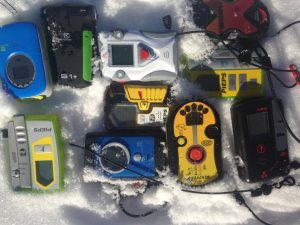
What else do you take? A GPS transponder or Avalanche beacon – NEVER go out and play in the snow without one! One that you have tested, know how to use and that has fresh batteries (or charge) and replacement batteries. I have one on me when I am just skiing within a resorts boundaries as there are so many places where a missed turn can put you in an instant world of hurt.
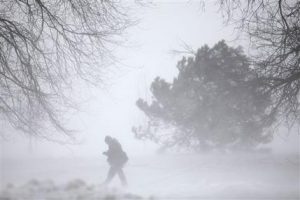
A lot of articles on prepping cover the off grid but seem to focus on warm days, cool or cold nights, and endless viability. Nice but not always the reality in winter where it snows. Snow camping and survival are a whole different animal in and of themselves. The cold and the moisture CAN kill you, the zero viability can stop you dead in your tracks. Skiing once at Whistler (Blackcomb) in British Columbia I took the dip into Glacier Bowl and not 20 meters down the steep the whole world went opaque. I could see NOTHING. Blast of snow/ice from an unseen storm produced the white-out. I stopped. I had to as there are trees and great big unpleasant rocks and other skiers. It took more than 2 minutes to break, with me listening for that clown that just dropped in and now can’t see me, or anything else. Not to be confused with snow-blindness which is from the glare off snow and ice, this is a different animal.
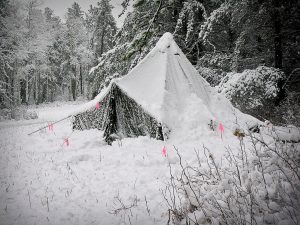
The mountains, a tempting destination if the WAWKI goes away, but, like fabrics it brings pluses (game, forests, snow and snow melt (water)), and minuses (your A-game for conserving heat, finding shelter, difficulty in movement and concealment.) Stay frosty!
The post Yeah, But You May Have to Deal with the White Stuff! appeared first on The Prepper Journal.
from The Prepper Journal
Don't forget to visit the store and pick up some gear at The COR Outfitters. How prepared are you for emergencies?
#SurvivalFirestarter #SurvivalBugOutBackpack #PrepperSurvivalPack #SHTFGear #SHTFBag

No comments:
Post a Comment